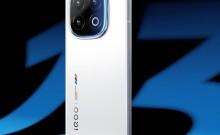Apple's iPhone 8 has been touted as the most revolutionary smartphone in the history of iPhones. Given its contemporary design and the 'most-expensive iPhone' tag, the fan expectations are extremely high. However, the iPhone 8's inherent technical problems could pose a serious threat to its impending launch in September.

The iPhone 8 will have a formidable opponent in Galaxy Note 8, which is slated for an August 23 launch. The Note 8 is also being marketed as the premium flagship with an expected price tag hovering around US$1,000.
Also Read: Apple to launch three new OLED iPhones next year
Coming to iPhone 8, a recent report suggested the wireless charging feature is not working properly. iPhone 8 will flaunt glass back panels and 3D sensing camera to support its 'most-expensive premium smartphone' tag in the market.
According to Fast Company, the iPhone 8 is facing problems in integrating Touch ID to the display, the short supply of OLED display panels, and the dubious operating mechanism of the front-facing 3D sensor camera (unlocking via facial recognition), which could further worsen its sales prospects at launch.
I've heard that inductive charging will (a) be sold separately, and (b) might be late, waiting for iOS 11.1 (a la Portrait mode last year). https://t.co/N65dHMNQIJ
— John Gruber (@gruber) July 8, 2017
Apple has, however, assured fans that several of these inherent issues could be fixed via a firmware or software update. John Gruber has recently tweeted that the iPhone 8's inductive charging feature could be sold separately and the feature may get added only with the arrival of iOS 11.1, which is probably a bug-fix.
As Forbes notes, The Portrait mode issue with iPhone 7 Plus was later resolved in a similar fashion as the feature had inherent issues at the time of launch.
Limitation with application software integration in iOS is being touted as the root cause of wireless charging and 3D sensor problems.
The latest leak suggests the Touch ID feature could be moved to iPhone 8's back panel owing to some technical challenges. Such a move could actually be a hindrance for implanting the 3D sensor on the phone's rear panel, due to spacing and operational constraints.
Apple is still undecided about the location of Touch ID as the company has faced major technical issues with embedding the feature under the OLED display. One obvious workaround would be to insert the Touch ID feature into the oddly enlarged power button akin to Sony's design strategy.
Given its most-expensive price tag (around US$1200) and premium branding, the iPhone 8 will undoubtedly be the show-stopper at Apple's 10th anniversary event. We just have to wait and see if iPhone 8 will indeed live up to fan expectations.














